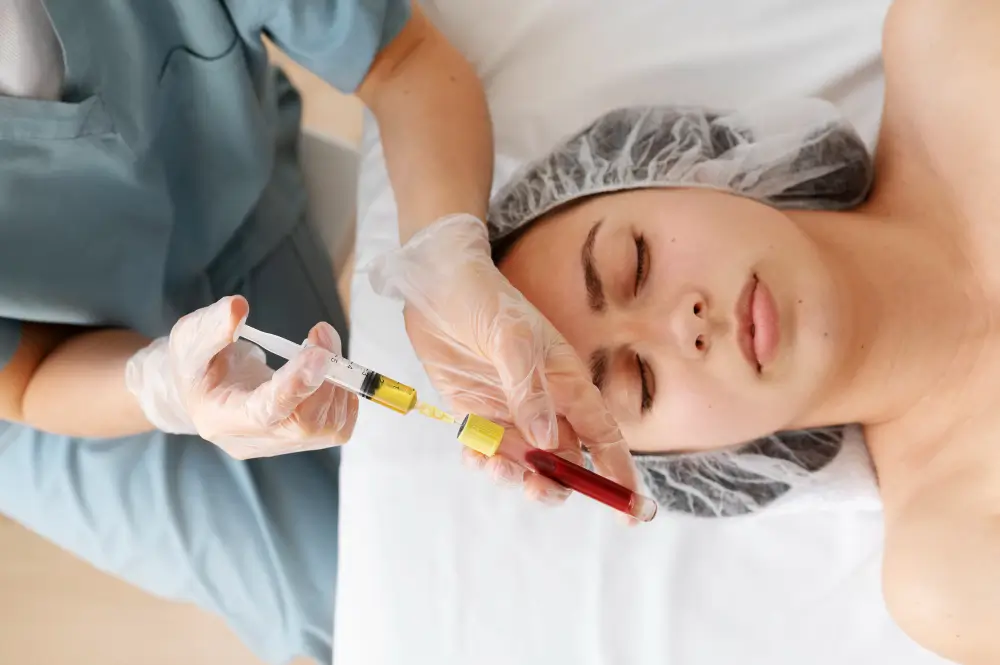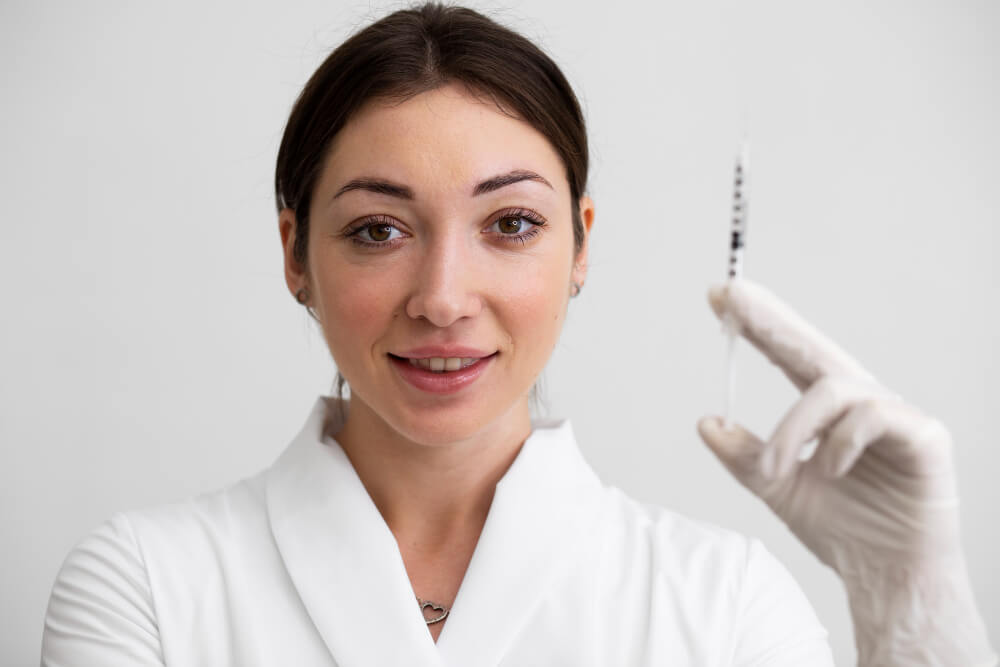This article will explore the essential factors related to Juvederm healing time, providing medical professionals with valuable insights to optimize patient recovery and enhance treatment outcomes.
Doctors need to talk about healing with their patients. They should cover what to expect and how to care for themselves at home. Answering questions and easing worries is also essential. This way, everyone knows what’s happening during recovery.
Juvederm healing time plays a significant role in how well the treatment works. Knowing about this helps doctors ensure patients get the best results. It also helps that doctors buy Juvederm fillers online from trusted retailers. Aftercare is vital after getting Juvederm. It makes the recovery smoother and allows the effects to last longer, up to 18 months. Patients should follow care tips closely for great results.
This article will discuss how educating patients about their recovery process is vital to optimal post-treatment satisfaction.
Key Takeaways
- Juvederm healing time is quick, often between four days to a week, but can depend on the type of product used and where it’s injected.
- After Juvederm treatment, avoid makeup for 12 hours and expect some redness or swelling that improves with gentle care at home.
- Follow-up visits are essential to check results and might include touch-ups for best outcomes.
- Avoid strenuous activities right after getting Juvederm to reduce swelling and bruising for smoother recovery.
- Keeping skin safe from the sun helps make Juvederm effects last up to 18 months.

Definition of Juvederm
Juvederm is a type of dermal filler made from hyaluronic acid. It helps to smooth out wrinkles and add volume to the face. The results are quick and can last long, making skin look young again. Different kinds of Juvederm fillers exist, each designed for specific areas like lips or cheeks. Some can keep their effect for up to 18 months.
Juvederm offers a practical, noninvasive option for enhancing facial features and reducing signs of aging. Knowing how well it works helps doctors give better care. This leads us to the importance of understanding healing time for top results.
Importance of Understanding Healing Time for Optimal Results
Knowing how long it takes for the body to heal after Juvederm is key. It helps medical pros ensure their patients get the best look and feel from their treatment. Good aftercare makes a big difference in recovery and results.
This means it’s super important to tell patients what to expect during recovery. They’ll be more at ease knowing how their healing goes step by step. Understanding this can set realistic expectations for both doctors and patients right from the start. Being clear about what happens after injections — like possible swelling or bruising — helps, too.
When people know how to care for themselves at home, they often see better outcomes with their Juvederm 8-point facelift or lip filler work.
Factors Affecting Juvederm Healing Time
To get the best results from Juvederm, knowing how healing times can vary is key. Several factors play huge roles in this process. The type of Juvederm product used makes a difference. Some are made to work deeper or last longer, affecting how quickly you heal.
Where on your body you get the injection also matters. Certain areas might swell more or take longer to settle. Every person heals differently, too, because of their unique bodies. Not touching your face after treatment helps a lot since it keeps the filler where it should be for the best look.
Sunlight, what you eat, and even how much water you drink can change how long the effects last. If pregnant, it’s essential to know that lip fillers aren’t FDA-approved and usually need about 12 to 24 hours of recovery.
Type of Juvederm Product Used
Moving from the general factors that influence Juvederm healing time, we now focus on the specific types of Juvederm products. Different products have unique formulations designed for various areas of the face, affecting recovery differently.
For example, Juvederm VOLUMA XC is often chosen for its ability to provide natural-looking results in cheek augmentation. This filler can last up to 2 years with optimal treatment, showcasing its long-lasting effectiveness.
Most Juvederm fillers offer cosmetic improvements lasting up to 18 months. Remarkably, Juvederm VOLUMA XC can continue showing results for up to a year when used in the chin area. This difference in longevity and targeted use between products like Juvederm VOLUMA XC—ideal for cheeks—and other fillers emphasizes the need for medical professionals to consider product type during treatment planning.
Patient’s Individual Healing Process
Everyone heals differently after getting Juvederm injections. Some people might see a swelling decrease in a few days; for others, it can take up to two weeks. This is because each person’s body reacts uniquely to the treatment.
Knowing this helps medical professionals explain to patients why their recovery time may differ from someone else’s. Doctors also tell patients they will start seeing results immediately, but the full effects come through in 7-10 days. Patients appreciate hearing about this timeline so they know what to expect during their healing process.
Managing Swelling and Bruising
Swelling and bruising are common after Juvederm treatments. Patients often see redness, tenderness, and swelling at the injection spots. These signs should go away in a few days to two weeks. To help with these issues, using cold compresses on the treated area can be effective. This simple step can reduce swelling and lower the chance of bruising.
Keeping patients comfortable is crucial to their recovery from Juvederm injections. Doctors advise against hard activities right after treatment to avoid more swelling or bruising. Next, we’ll look into further avoiding strenuous activities to ensure a smooth patient healing process.
Sun Exposure and Skincare
Sun exposure can have a big impact on the healing process after getting Juvederm injections. Keeping skin safe from too much sun for at least two weeks post-treatment is essential. This helps make sure the results last longer and look better. Too much sun can lessen the effects of fillers and hurt healing skin.
Skincare is also vital during recovery. Patients should avoid intense heat and high sun rays to protect their treatment outcome. Staying hydrated plays a big part in helping the skin recover well and supporting the lasting results they seek.
Patient Education and Communication
Managing patient expectations leads directly to educating them about what comes next. Teach patients about the healing process after Juvederm injections. It’s vital to talk clearly and kindly.
Explain why they shouldn’t touch or press on the injection sites for at least six hours. Tell them redness, swelling, and tenderness are standard right after treatment.
Providing Post-Care Instructions for Home Recovery
Talk to your patients about keeping the treated area clean and not touching it for at least six hours after getting Juvederm shots. This helps avoid infection and lets the treatment work best. Tell them to wait a full 12 hours before they put on makeup. This gives their skin time to start healing without extra stuff on it.
Swelling or red spots might show up but usually go away in one or two days; sometimes, it takes a bit longer. Explain that while they might see some changes immediately, the real results will show in about 7 to 10 days. They must follow all post-filler care tips you give for the smoothest recovery.
If significant events are coming up, advise scheduling treatments at least two weeks ahead. This way, their skin has enough time to heal and look its best.

Conclusion
Understanding Juvederm’s healing time is key to great results. This process requires care, like waiting a bit before wearing makeup and not touching the skin too much after treatment. Knowing what affects healing helps doctors guide patients to speedy recoveries.
After getting fillers, good patient education on what to do ensures they see the best outcomes. People can enjoy their new look quickly and for a long time with proper care.
References
Study on dermal fillers
https://www.aestheticnursing.co.uk/content/clinical/the-dichotomy-of-dermal-fillers-when-does-the-biostimulatory-response-become-one-of-regeneration-versus-one-of-replacement
Study on healing after dermal fillers
https://www.ncbi.nlm.nih.gov/pmc/articles/PMC4248003
